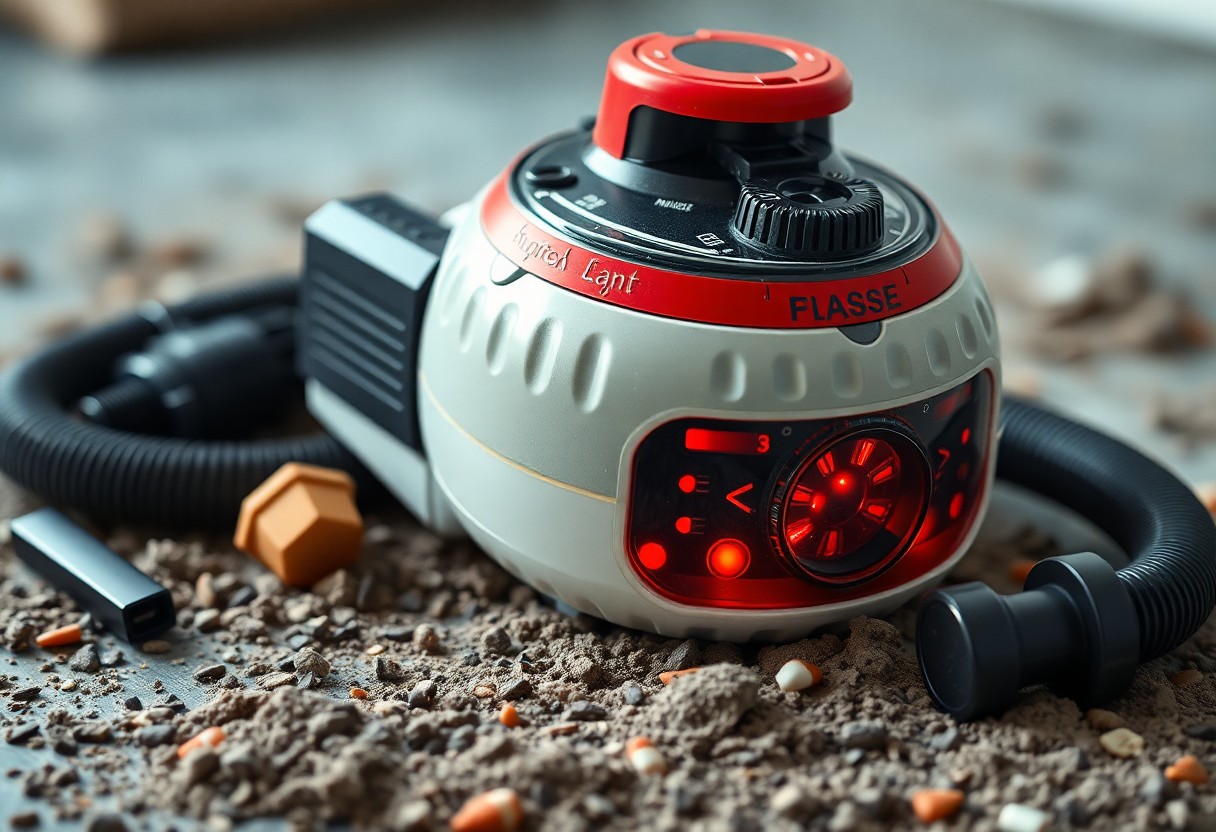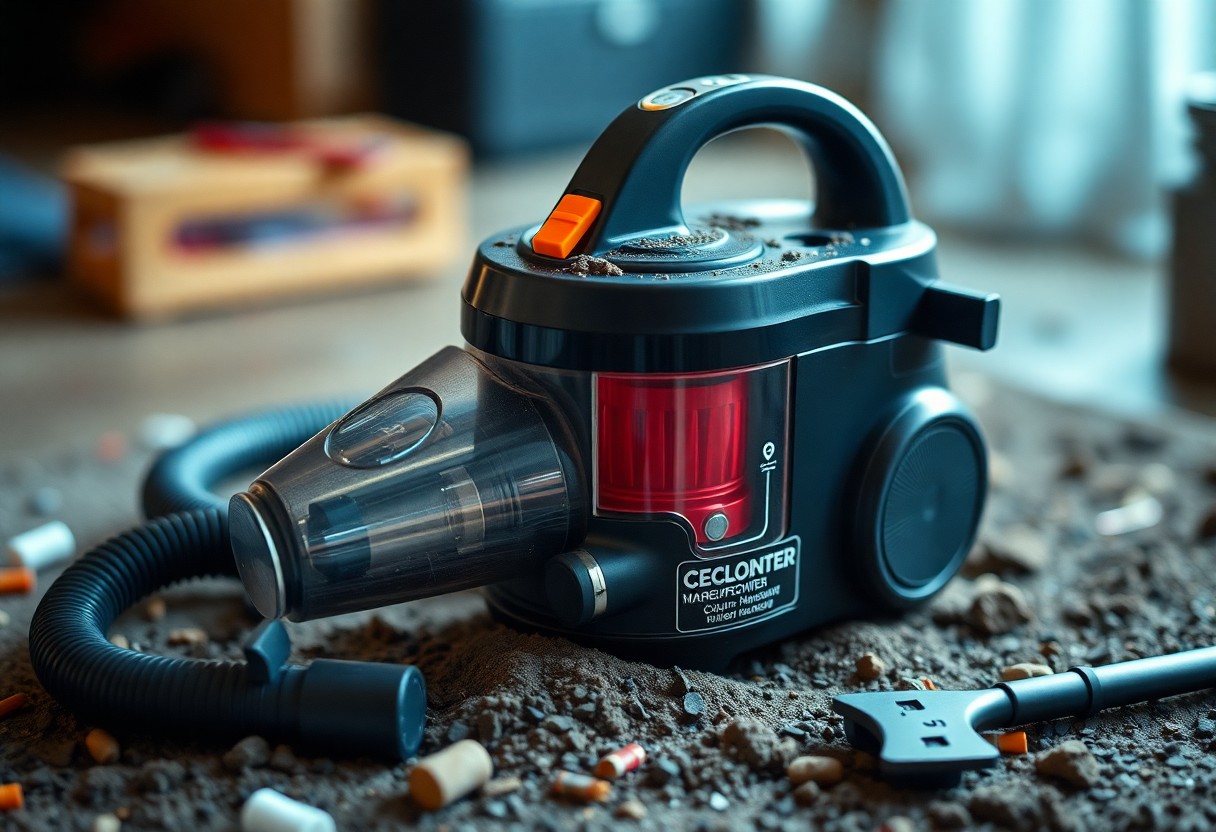How To Maximize Suction Power In Your Compact Vacuum Cleaner
Harness the full potential of your compact vacuum cleaner by following these practical tips to maximize its suction power. You deserve a cleaner home, and with the right techniques, you can enhance performance while ensuring the longevity of your device. From selecting the appropriate attachments to maintaining a clean filter, you will discover valuable methods that boost efficiency and tackle even the most stubborn dirt and debris. Dive in and transform your cleaning experience with the smart strategies outlined in this guide, tailored just for you.
Contents
- Understanding Suction Power
- What is Suction Power?
- Factors Affecting Suction Power
- Essential Tips for Maximizing Suction Power
- Regular Maintenance Practices
- Proper Use of Attachments
- Optimizing Filters and Bags
- Choosing the Right Filter
- Changing Bags Regularly
- Adjusting Vacuum Settings for Efficiency
- Understanding Different Surfaces
- Using the Right Power Settings
- Enhancing Airflow and Clogs Removal
- Identifying Common Clogs
- Techniques to Enhance Airflow
- Summing up
Understanding Suction Power
While the effectiveness of your compact vacuum cleaner largely hinges on its suction power, understanding this concept is key to optimizing its performance. Suction power determines how well your vacuum can pick up dirt and debris from various surfaces. By grasping the fundamentals, you can make informed decisions on choosing a model or adjusting your current one for maximum efficiency.
What is Suction Power?
On a basic level, suction power refers to the vacuum’s ability to create a vacuum effect that pulls in dirt, dust, and other particles. Measured in Air Watts or water lift, the higher the suction power, the more effective your vacuum will be at cleaning different types of surfaces. This understanding helps you gauge the machine’s capabilities when selecting one for your cleaning needs.
Factors Affecting Suction Power
Factors that impact suction power include:
- Motor strength
- Design of the vacuum
- Filter efficiency
- Suction nozzle design
This means that by customizing or upgrading these elements, you can significantly enhance the performance of your compact vacuum cleaner.
Factors such as motor strength and filter efficiency are vital in determining the overall effectiveness of your vacuum. A powerful motor enhances suction, while an efficient filter ensures minimal loss of suction power as dirt accumulates. Moreover, a well-designed nozzle can maximize airflow to optimize cleaning. This holistic approach allows you to tackle various cleaning tasks effectively.
Another important aspect to consider is the vacuum’s airflow. The quality and design of your vacuum can hinder or facilitate airflow, impacting suction power. A clean filter and unobstructed hose significantly boost performance. Moreover, the choice of attachments plays a role in efficiency; using the right tool for each task maximizes your machine’s capabilities. This attention to detail can transform your cleaning experience.
Essential Tips for Maximizing Suction Power
It’s important to enhance the performance of your compact vacuum cleaner by following these vital tips. You can maximize its suction power through:
- Regularly emptying the dust container.
- Changing or cleaning the filters frequently.
- Using the appropriate attachments for different surfaces.
- Ensuring the vacuum is not obstructed by debris.
Perceiving how these factors affect your vacuum’s performance can lead to significant improvements in cleaning efficiency.
Regular Maintenance Practices
Any commitment to consistent maintenance will significantly enhance your vacuum’s suction power. Ensure that you regularly check and clean the filters and brush rolls. Additionally, empty the dust container frequently to prevent blockages that can impede airflow. Neglecting these simple practices can lead to decreased cleaning effectiveness over time.
Proper Use of Attachments
Clearly, using the right attachments is vital for boosting suction power. Attachments such as crevice tools and dusting brushes allow you to clean various surfaces effectively. By selecting the appropriate tool for each cleaning task, you enhance the overall efficiency of your vacuum. Moreover, using the wrong attachment can hinder performance and lead to unsatisfactory results.
Properly utilizing attachments will ensure your vacuum operates at its best. Each tool is designed for specific cleaning scenarios, whether it’s reaching tight spaces with a crevice tool or capturing dust with a motorized brush. It’s important to use these attachments as directed for optimal results; failure to do so may result in reduced suction power and potential damage to both your vacuum and surfaces. Therefore, always select the right tool for the job to avoid inefficiency and ensure your vacuum remains a reliable cleaning companion.
Optimizing Filters and Bags
The performance of your compact vacuum cleaner largely depends on the efficiency of its filters and bags. Ensuring that these components are optimized not only enhances suction power but also prolongs the life of your device. Regular maintenance and the right choices in filtration will guarantee you keep dust and allergens at bay, providing a cleaner living environment.
Choosing the Right Filter
Filter selection is significant when it comes to maximizing suction power. You should opt for high-efficiency particulate air (HEPA) filters, which capture even the tiniest particles, ensuring better air quality. Selecting the right filter not only maintains optimal suction but enhances your vacuum’s overall performance.
Changing Bags Regularly
To maintain maximum suction, it is vital that you change your vacuum bags at regular intervals. Neglecting to do so can lead to clogged filters, reduced airflow, and ultimately compromised cleaning effectiveness.
Plus, changing your vacuum bags is important for maintaining health standards. A full bag can serve as a breeding ground for harmful bacteria and mold. When bags are overfilled, your vacuum will struggle to provide the suction you need, and fine dust particles can escape back into your home’s air. Keeping your vacuum bags fresh not only ensures better suction but also contributes to a healthier living environment by reducing allergen exposure.

Adjusting Vacuum Settings for Efficiency
Keep in mind that adjusting the settings on your compact vacuum cleaner can significantly enhance suction power. By calibrating the vacuum according to your cleaning needs, you not only achieve better results but also extend the lifespan of your appliance. Experiment with different modes for optimal performance on various surfaces, ensuring you maintain a balance between suction strength and energy consumption.
Understanding Different Surfaces
The effectiveness of your vacuum cleaner heavily relies on the type of surface you’re cleaning. Different materials, such as carpets, hardwood floors, and upholstery, require varying levels of suction and brush agitation. Understanding these surface characteristics ensures you select the right settings, enabling more efficient dirt and debris removal without damaging your flooring.
Using the Right Power Settings
With the right power settings, you can maximize your vacuum’s performance and enhance your cleaning efficiency. Adjusting the suction level to fit the surface type will not only clean better but also reduce wear on your vacuum’s components.
This means that for high-pile carpets, you should increase the suction power to effectively lift dirt and pet hair, while for bare floors, a lower setting can prevent scattering debris. Most compact vacuum cleaners feature multi-power options, allowing you to seamlessly transition between surfaces. Always consult your vacuum’s manual to utilize these settings correctly, as improper adjustments can lead to decreased efficiency or even damage to the device.

Enhancing Airflow and Clogs Removal
Many users overlook the significance of airflow in maximizing their vacuum cleaner’s suction power. The efficiency of your compact vacuum is largely dependent on unobstructed airflow, which allows it to pick up debris and dirt effectively. By keeping air passages clear, you ensure that your machine operates at its best, ultimately restoring its suction performance.
Identifying Common Clogs
On your journey to a more powerful vacuum, you should start by identifying common clogs that hinder performance. Look for blockages in the hose, filter, and brush roll, which can accumulate hair, dirt, and debris over time. Regularly inspecting these areas ensures that you’re aware of any build-up that could compromise your machine’s effectiveness.
Techniques to Enhance Airflow
Assuming you have a basic understanding of your vacuum cleaner’s components, you can easily implement a few techniques to enhance airflow. Regularly clean or replace your vacuum filters, and ensure that the hose is free from obstructions. Moreover, make sure that the brush roll is clear of tangled hair and debris to maximize the air passage for efficient suction.
It is advisable to check your vacuum’s filters regularly, as dirty filters significantly reduce airflow. You should also take time to inspect the hose and attachments for any blockages; a simple thorough cleaning can make a tremendous difference. Additionally, maintaining the brush roll—by removing any tangled fibers or debris—will allow it to spin freely, thus enhancing suction and airflow. By following these techniques, you will be able to sustain optimal performance and prolong the life of your vacuum cleaner.
Summing up
To wrap up, maximizing suction power in your compact vacuum cleaner involves regularly maintaining its filters and brushes, selecting the appropriate floor attachment, and ensuring optimal airflow by keeping the unit clean and free from obstructions. Additionally, using the vacuum cleaner on the correct setting for the surface being cleaned will enhance its effectiveness. By implementing these strategies, you can ensure that your compact vacuum cleaner operates at peak performance, making your cleaning tasks more efficient and rewarding.